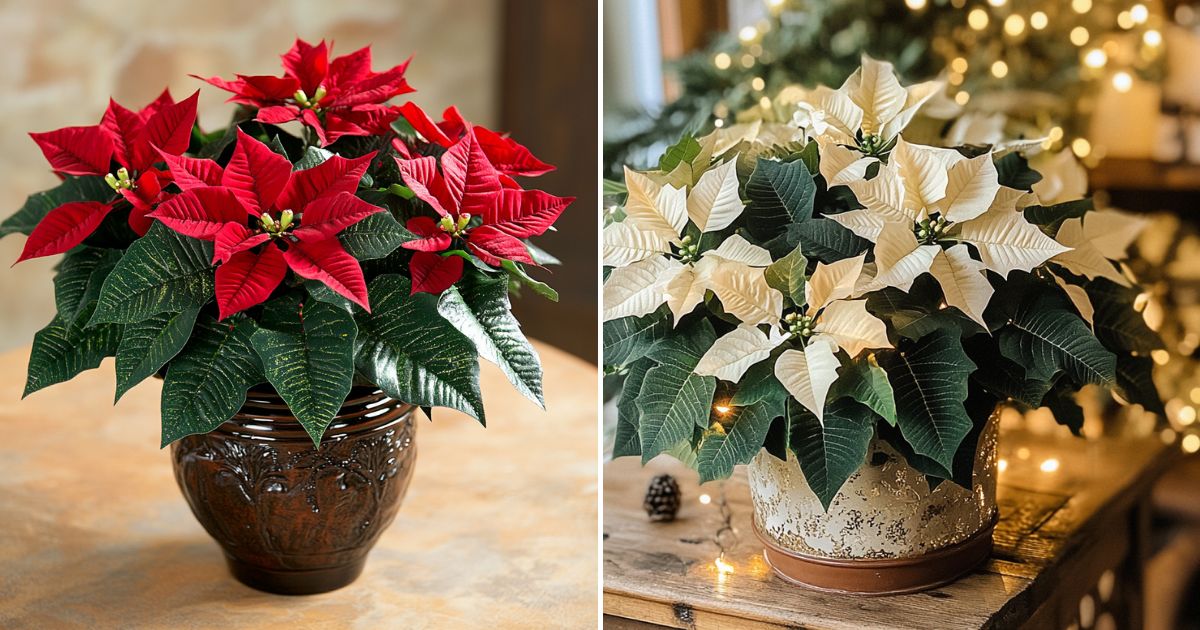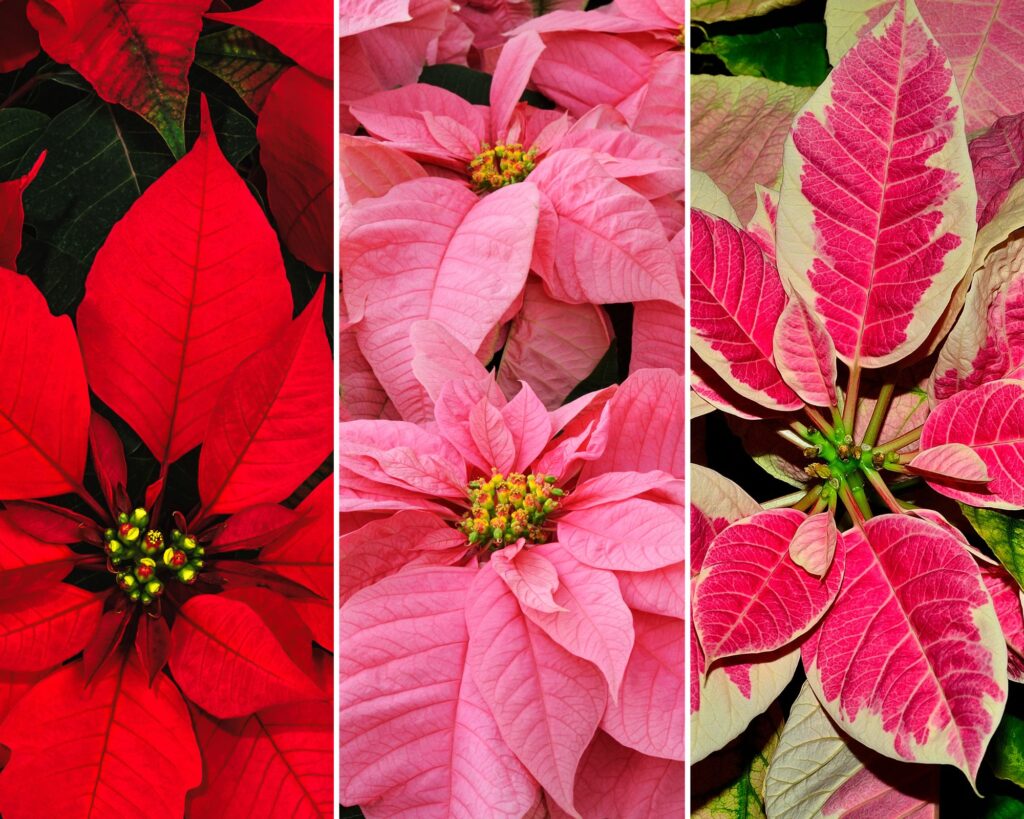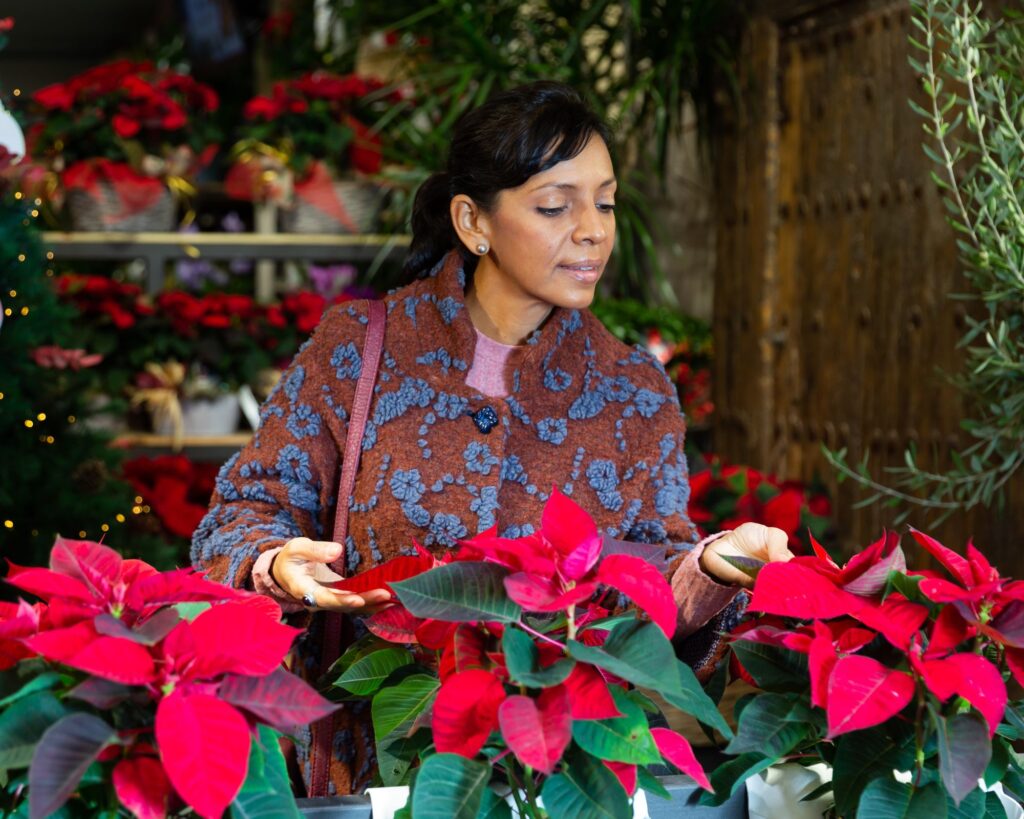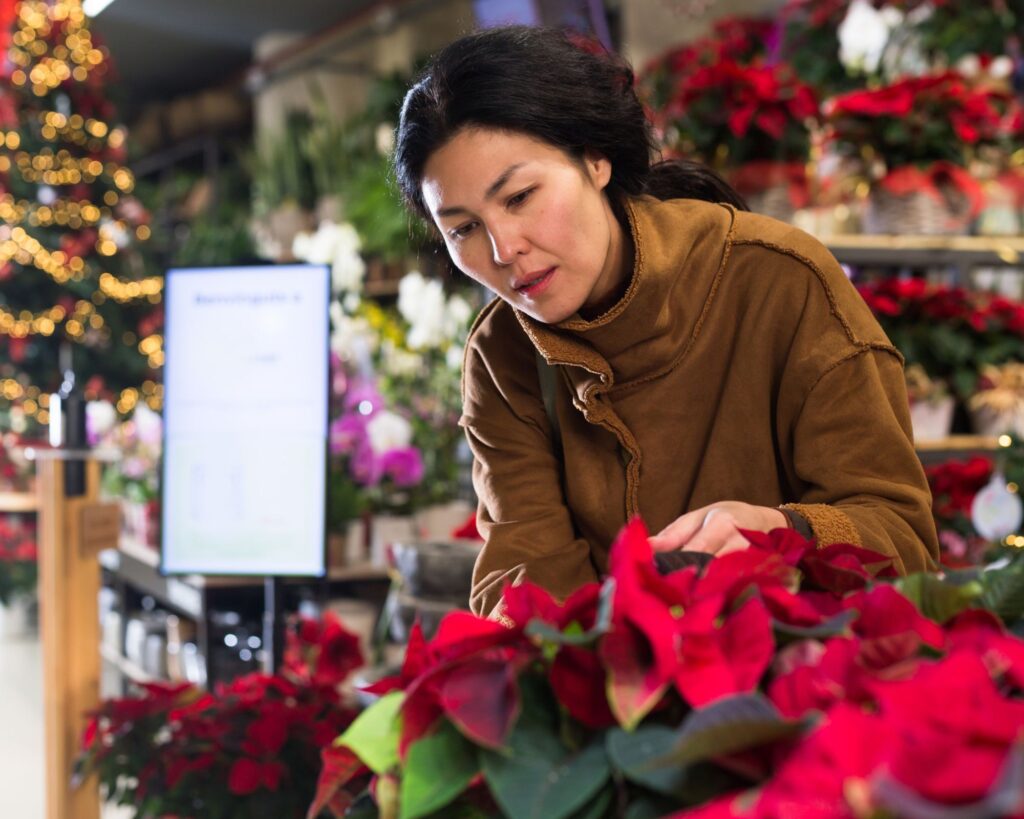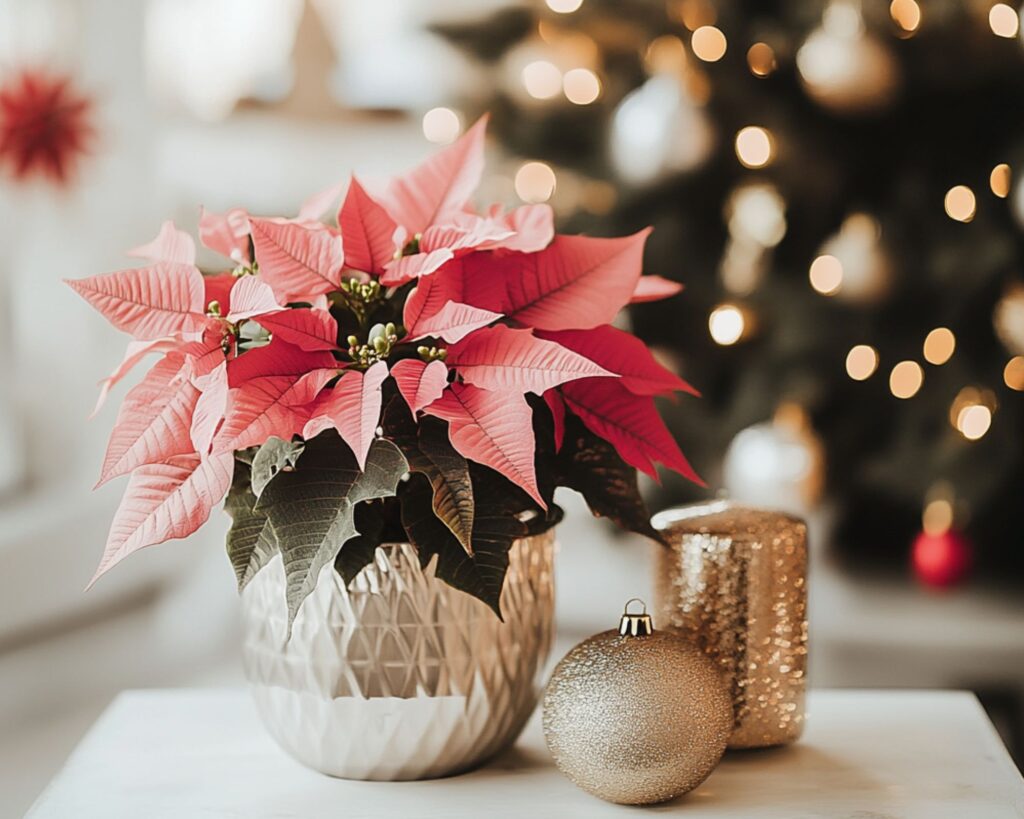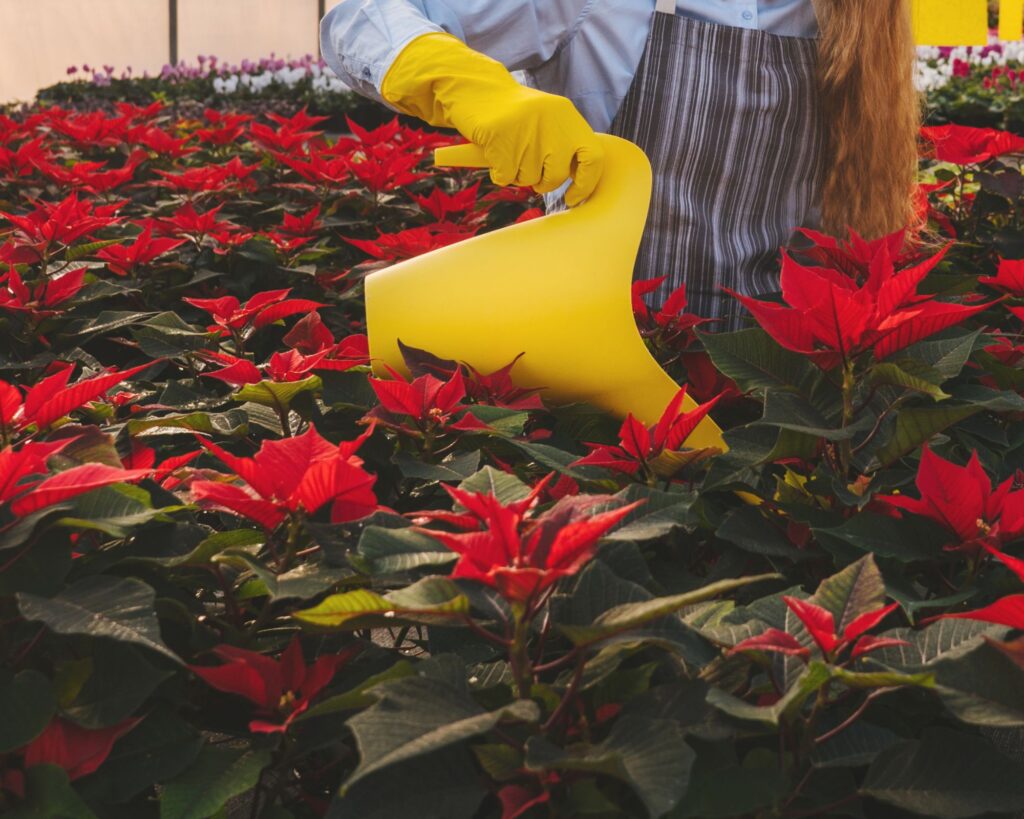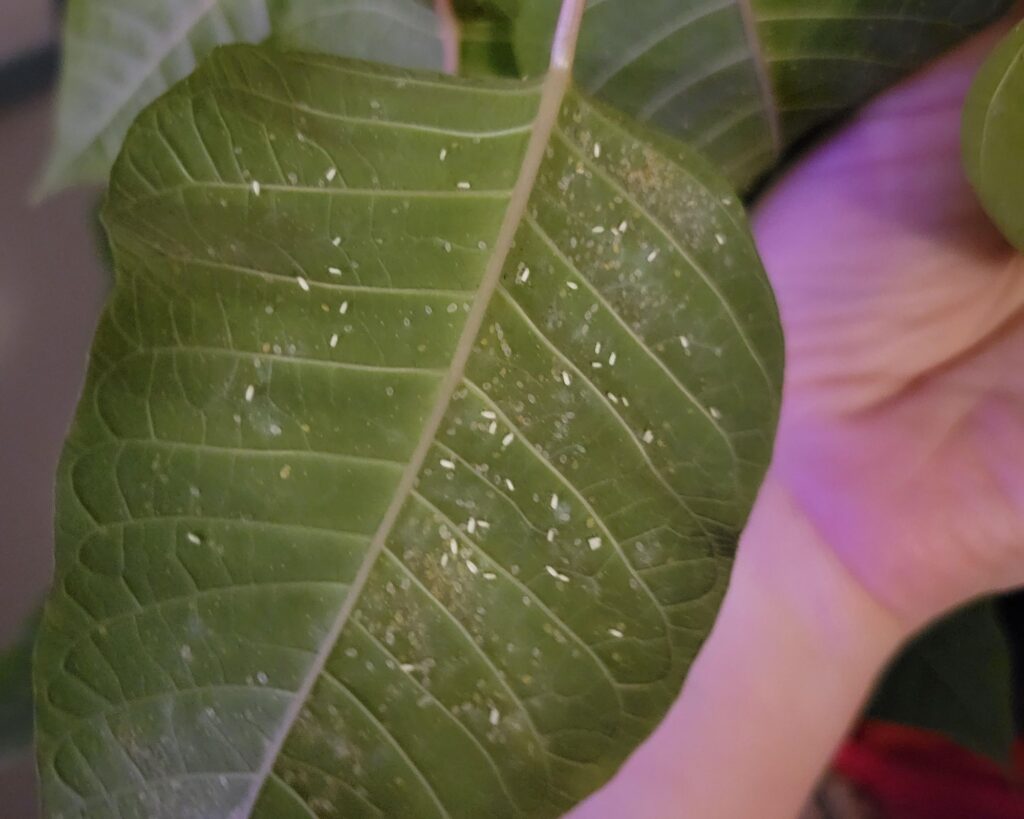Poinsettias aren’t just ordinary holiday plants; they are the stars of festive decor, their vibrant red and green leaves instantly transforming any home into a winter wonderland.
But how do you ensure these dazzling beauties remain fresh and lively throughout the holiday season? It’s simpler than you think!
With the right light, temperature, and care, your poinsettias can thrive and brighten your celebrations from start to finish.
Understanding Your Poinsettia
Poinsettias are iconic holiday plants with a rich history, diverse varieties, and deep cultural significance. Knowing their origins and types can help you appreciate them more.
Poinsettias originate from Mexico and Central America. They were named after Joel Roberts Poinsett, the first U.S. minister to Mexico, who introduced the plant to the United States in 1828.
Ancient Aztecs called them “Cuetlaxochitl” and used them for medicinal and dye purposes.
There are numerous poinsettia varieties beyond the traditional red. Pink, white, and marbled versions exist, each bringing unique beauty to your holiday decor.
“Jingle Bells” features red and white speckles, while “Prestige Red” is known for its vibrant red leaves and durability.
Poinsettias are closely linked to Christmas, symbolizing purity and love in many cultures. Many believe they create a festive atmosphere, making them a popular decoration choice during the holidays.
Evaluating Plant Health
Picking out the ideal poinsettia involves assessing its health and color. Consider factors such as the plant’s overall condition and the shades that best suit your holiday decor.
When choosing a poinsettia, start by examining the leaves. Look for dark green foliage, which indicates a healthy plant. Leaves should be free from spots, wilt, or yellowing.
Check the bracts, the colored leaves, ensuring they are vibrant and free of blemishes. Inspect the soil to ensure it is moist but not waterlogged. Dry or overly wet soil might signal poor care.
Hold the plant and gently shake it. Minimal leaf drop is a good sign. Also, look underneath the leaves for pests like aphids or whiteflies.
Ensure the plant’s structure is sturdy. Weak stems might struggle to support the bracts. Healthy poinsettias will have lush, full growth, making for a more attractive display.
Choosing the Right Size and Color
Poinsettias come in various sizes. For a table centerpiece, consider smaller plants. Larger plants work well in floor displays.
Color is another crucial factor. Classic red is popular, but poinsettias come in white, pink, and marble varieties. Select a color that complements your holiday decor.
Some varieties have different growth habits. Compact varieties suit smaller spaces, while bushier types fill larger areas better.
Assess the quality of the color. Vibrant and even coloring on the bracts indicates a well-maintained plant. Avoid varieties where the color looks faded or uneven.
Ideal Growing Conditions – Light and Temperature
To keep your poinsettias vibrant during the holidays, you need to pay careful attention to their specific growing conditions. Key factors include light, temperature, watering, and humidity.
Poinsettias thrive in bright, indirect light. Place them near a window but away from direct sunlight, which can scorch the leaves. If natural light is limited, fluorescent lights will also do.
Temperature is crucial. Keep them in a room that stays between 65-75°F (18-24°C) during the day and slightly cooler at night.
Avoid placing them near drafts, heaters, or cold windows. Sudden temperature changes can stress your poinsettia, leading to leaf drop and reduced vibrancy.
Poinsettias are sensitive to cold temperatures. If exposed to temperatures below 50°F (10°C), they can suffer damage. Always protect them during transport from the store to your home.
Watering and Humidity Tips
Water your poinsettia when the top inch of soil feels dry. Water thoroughly until water drains out of the bottom, but ensure the pot isn’t sitting in water to avoid root rot.
Overwatering can cause yellowing leaves, while under-watering can lead to wilting.
Maintain moderate humidity levels. Poinsettias prefer a humidity level of around 40-60%. If your home is dry, consider using a humidifier or placing a tray of water near the plant to increase humidity.
Mist the leaves occasionally to keep the plant hydrated, especially during dry winter months.
Avoid letting the plant sit in waterlogged soil. Proper drainage is essential for the health of your poinsettia, so consider using a well-draining potting mix and a pot with drainage holes.
Fertilizing for Growth
For a thriving poinsettia, focus on fertilizing, pruning, and pest prevention. These essential care tips will ensure your plant remains vibrant throughout the holiday season.
Fertilize your poinsettia every two weeks with a balanced, all-purpose liquid fertilizer. Choose one with an equal ratio of nitrogen, phosphorus, and potassium, such as a 10-10-10 formula. This will support both foliage and flower growth.
Mix the fertilizer at half the recommended strength to avoid over-fertilizing. Apply it directly to the soil when the plant is well-watered to prevent root burn.
Regular fertilization helps maintain healthy, lush leaves and vibrant color.
Pest Prevention and Treatment
Poinsettias can attract pests such as whiteflies, spider mites, and aphids. Inspect your plant regularly for signs of infestation. If you notice pests, treat with insecticidal soap or neem oil.
Prepare a solution according to the product instructions and spray the affected areas thoroughly. Ensure proper air circulation around your plant and avoid over-watering, as this can lead to mildew and other issues. Maintaining a healthy environment is key to preventing pest problems.
Post-Holiday Care
Reblooming poinsettias can be a rewarding process. It involves specific care routines post-holiday and utilizing a dark treatment method to mimic natural seasonal changes.
Once the holidays are over, focus on consistent care. Water your poinsettia when the top inch of soil feels dry. Ensure it has indirect sunlight for at least six hours daily.
In early spring, cut the stems back to about 6 inches to encourage new growth.
As new growth appears, start feeding your plant with a balanced liquid fertilizer every two weeks. Keep the plant in a warm room with temperatures between 65-75°F to promote healthy development.
The Dark Treatment Method
For the poinsettia to rebloom, it needs a period of darkness to simulate winter conditions.
Starting in early October, place your plant in complete darkness for 14 hours each night.
Use a closet or cover it with a box from 5 PM to 8 AM. During the day, return it to its sunny spot.
Continue this for about eight weeks. You should start seeing colorful bracts forming by mid-November.
During this time, don’t forget to follow regular watering and feeding schedules to keep the plant healthy and vigorous.
Poinsettias add a festive charm to any home during the holiday season with their vibrant red and green foliage.
With these simple care practices, your poinsettias can remain bright and beautiful throughout the holidays, enhancing your home’s festive atmosphere.
Understanding their history, selecting healthy plants, and maintaining ideal growing conditions will ensure that your poinsettias stay vibrant and contribute to your holiday decor for many seasons to come.
